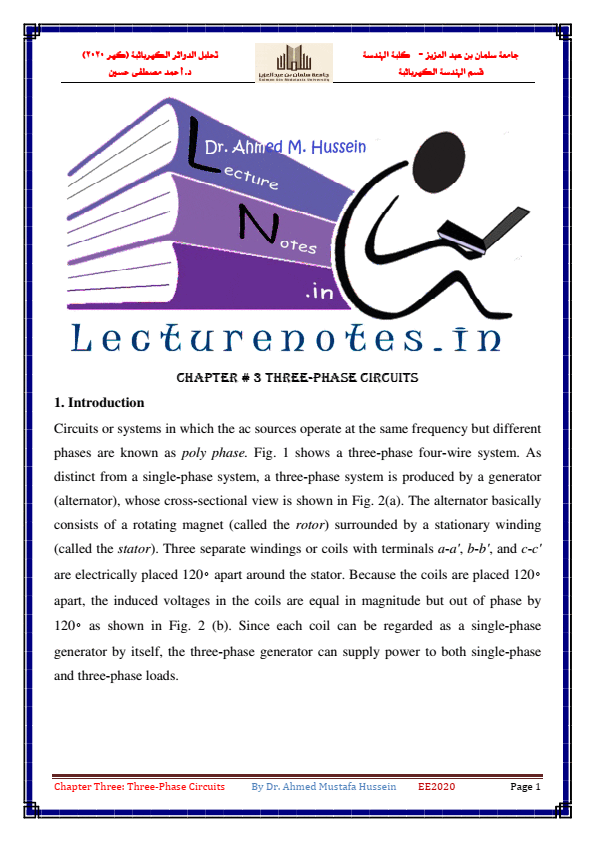3-phase AC circuits
Circuits or systems in which the ac sources operate at the same frequency but different phases are known as polyphase. Figure 1 shows a three-phase four-wire system. As distinct from a single-phase system, a three-phase system is produced by a generator (alternator), whose cross-sectional view is shown in Figure 2(a).

The alternator basically consists of a rotating magnet (called the rotor) surrounded by a stationary winding (called the stator). Three separate windings or coils with terminals a-a’, b-b’, and c-c’ are electrically placed 120° apart around the stator.

Because the coils are placed 120° apart, the induced voltages in the coils are equal in magnitude but out of phase by 120° as shown in Figure 2 (b).
A typical three-phase system consists of three voltage sources connected to loads by three or four wires (or transmission lines) using both step-up and step-down transformers.

Balanced three-phase circuits
It is appropriate to mention that a balanced delta-connected load is more common than a balanced Y-connected load. This is due to the ease with which loads may be added or removed from each phase of a delta-connected load.
This is very difficult with a Y-connected load because the neutral may not be accessible. On the other hand, delta connected sources are not common in practice because of the circulating current that will result in the delta-mesh if the three-phase voltages are slightly unbalanced.
Balanced Y-Y three-phase circuits
Any balanced three-phase system can be reduced to an equivalent Y-Y system. Therefore, analysis of this system should be regarded as the key to solving all balanced three-phase systems.
| Title: | The basics of three-phase circuits for beginners – Dr. Ahmed Mustafa Hussein |
| Format: | |
| Size: | 10.1 MB |
| Pages: | 48 |
| Download: | Right here | Video Courses | Membership | Download Updates |



This is a nice place to be